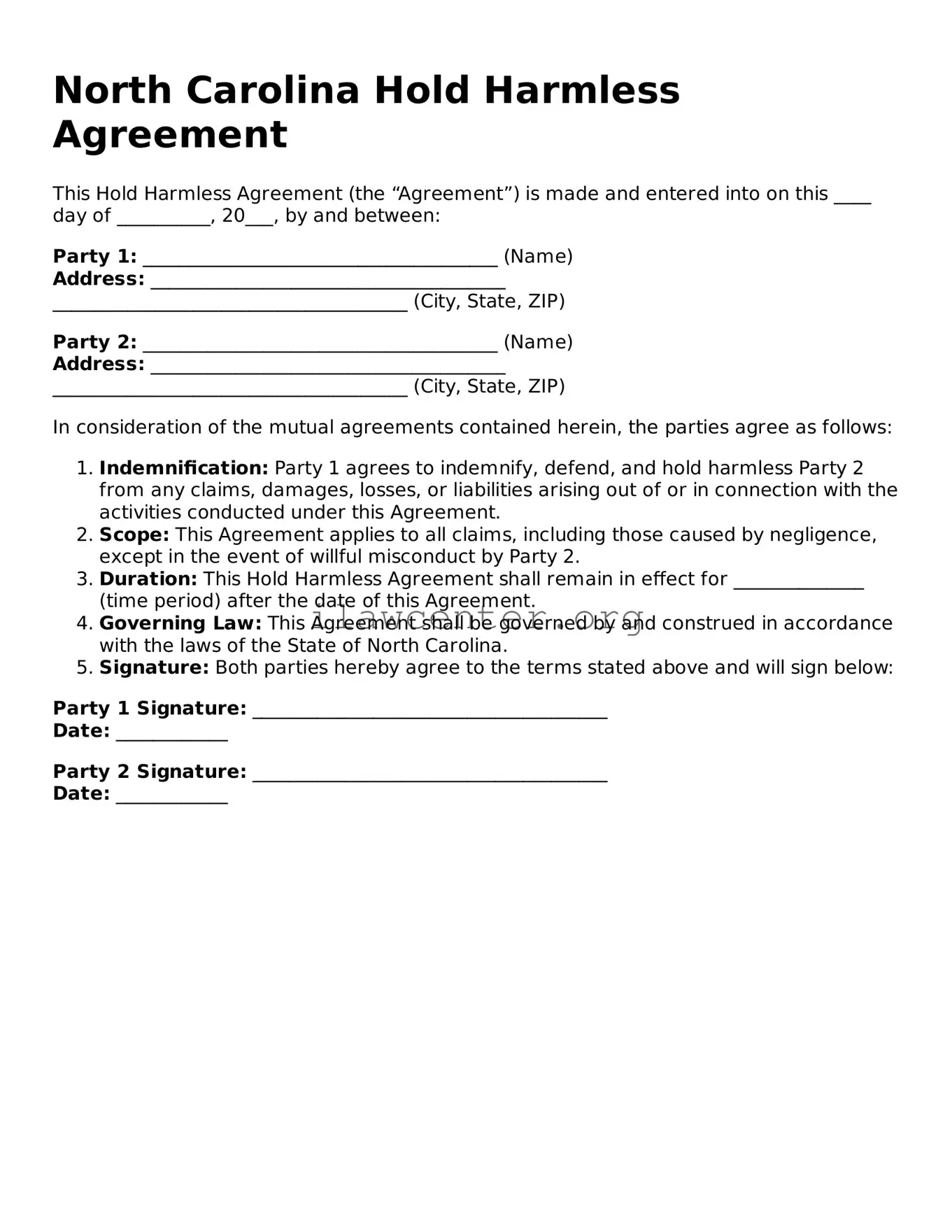What is a Hold Harmless Agreement in North Carolina?
A Hold Harmless Agreement is a legal document in which one party agrees to not hold another party liable for any potential losses or damages. In North Carolina, these agreements are often used in various situations, such as rental agreements, construction contracts, or events where risks may arise. The purpose is to provide a level of protection, ensuring that one party assumes liability for certain risks.
When should I use a Hold Harmless Agreement?
This type of agreement may be appropriate in scenarios where one party is engaged in activities that inherently carry risks. For example, if you are hosting an event and inviting others to participate, having attendees sign a Hold Harmless Agreement can help protect you from legal claims arising from accidents or injuries. Similarly, contractors may require subcontractors to sign this document to ensure that responsibility for risks is clear.
What are the essential components of a Hold Harmless Agreement?
Typically, a Hold Harmless Agreement should include several key components. Firstly, it should clearly identify the parties involved. Next, the agreement must specify the scope of the liability being waived. Additionally, it should outline any relevant definitions, state the governing law, and include signatures from all relevant parties. A well-structured agreement should leave little room for ambiguity regarding the extent of liability covered.
Are Hold Harmless Agreements enforceable in North Carolina?
In general, courts in North Carolina uphold Hold Harmless Agreements as long as they meet specific criteria. To be enforceable, the agreement must be clear and unambiguous in its language. Furthermore, it should not violate public policy. For example, courts are unlikely to enforce an agreement that seeks to absolve a party from liability related to gross negligence or willful misconduct.
Can I modify a Hold Harmless Agreement?
Yes, modifications to a Hold Harmless Agreement are permissible, provided that all parties involved agree to the changes. It's vital to document any amendments in writing and to have all parties sign off on the revised agreement. This steps ensures that all parties remain aware of their rights and responsibilities under the modified terms.
What happens if someone sues despite having a Hold Harmless Agreement?
If a lawsuit arises despite the presence of a Hold Harmless Agreement, the party seeking protection can use the agreement as a defense. The court will examine the terms of the agreement to determine its enforceability. If deemed valid, the court may dismiss the case or limit the liability of the protected party. However, this does not eliminate the possibility of litigation; it merely affects the potential outcome.
Should I consult a lawyer before signing a Hold Harmless Agreement?
Consulting a lawyer before signing a Hold Harmless Agreement is advisable. An attorney can help you understand the implications of the agreement and ensure that it adequately protects your interests. Additionally, they can review the terms to confirm that no critical elements are overlooked, and that the agreement complies with North Carolina law.
